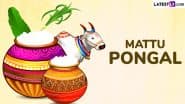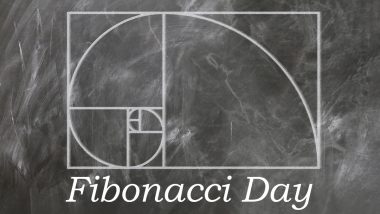November 23 marks the celebration of Fibonacci Day. Observed every year on the same date, it relates to the Fibonacci Sequence derived by Italian Mathematician Leonardo Fibonacci. Even if you are not a maths genius, the Fibonacci sequence is interesting and makes the subject fun. The Fibonacci sequence is that each number is the sum of the two preceding ones. What makes it a work of genius is how the sequence fits in many elements of nature. Fibonacci Day is marked to honour Leonardo Bonacci and his incredible work. So on this day, we tell you some facts about him and his principle which will definitely impress the geek in you. Pi Approximation Day 2020 Date & History: Know Value and Significance of the Annual Celebration of the Mathematical Constant Pi.
- November 23 is a Fibonacci Day, because the numbers are in the Fibonacci sequence of 1, 1, 2, 3. So when written in MM/DD format it forms the sequence.
- Fibonacci is a coined term. It means the “son of Bonaccio” which refers to Fibonacci’s father.
- Leonardo Bonacci travelled with his father who was an Italian merchant. On his travels, he learnt the numbering system and then made it popular elsewhere in Europe.
- Fibonacci realized the advantages of the Hindu-Arabic numeral system and pooularized it. He wrote the book Liber Abaci (Book of Calculation), which was on this Hindu- Arabic numerals and their use in practicality.
- Before Fibonacci, Europe used the Roman style of writing numbers which made modern mathematics almost impossible.
- The Fibonacci sequence is said to have emerged from a puzzle about rabbits. In the book, he wrote of "if there are a pair of newly born rabbit - male and female - in the field and if they are able to produce another pair of rabbits in their second month of life, how many pairs of rabbits will be there after a year?"
- The name of this equation as "Fibonacci sequence" was first used by the 19th-century number theorist Édouard Lucas.
- Fibonacci sequence appears in many patterns of nature like the branching in trees, leaves on a stem, family trees of honeybees, flower petals, spirals of a sunflower and so on.
- Other than the sequence, he also wrote the Practica Geometriae. It includes 8 chapters of theorems based on Euclid’s Elements and Divisions.
- Another interesting thing about the Fibonacci sequence is its very close to the Golden Ratio 1.6. Objects whose length and breadth exhibit the Golden Ratio are thought to be the most pleasing to the eye.
If you are a math geek then you'd already know the Fibonacci Sequence and why it is so wonderful. Even for those who are not these facts can be interesting to learn how it works in nature. Do share these interesting facts with your friends today.
(The above story first appeared on LatestLY on Nov 23, 2020 08:30 AM IST. For more news and updates on politics, world, sports, entertainment and lifestyle, log on to our website latestly.com).













 Quickly
Quickly




















